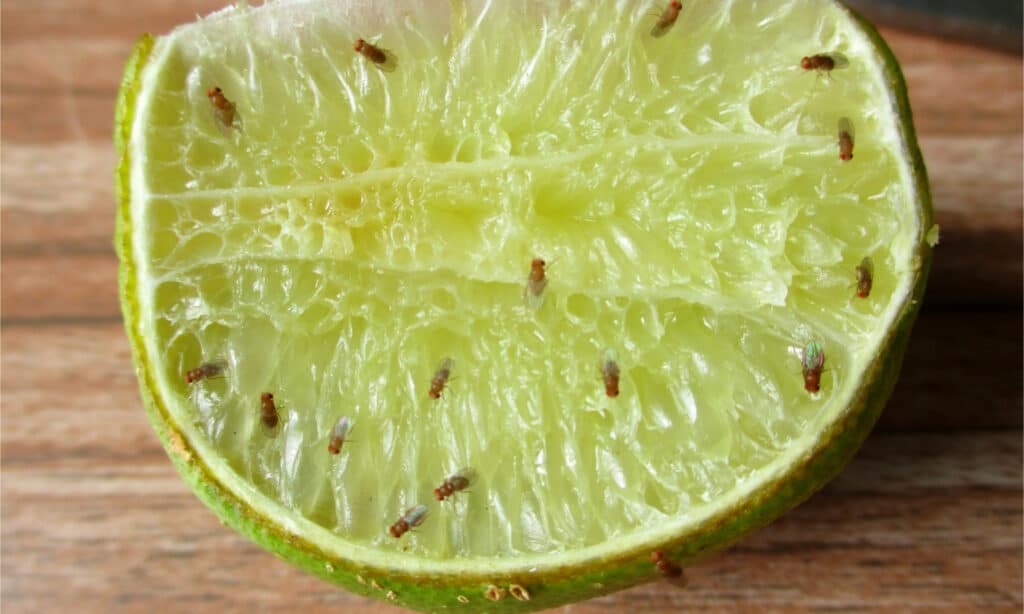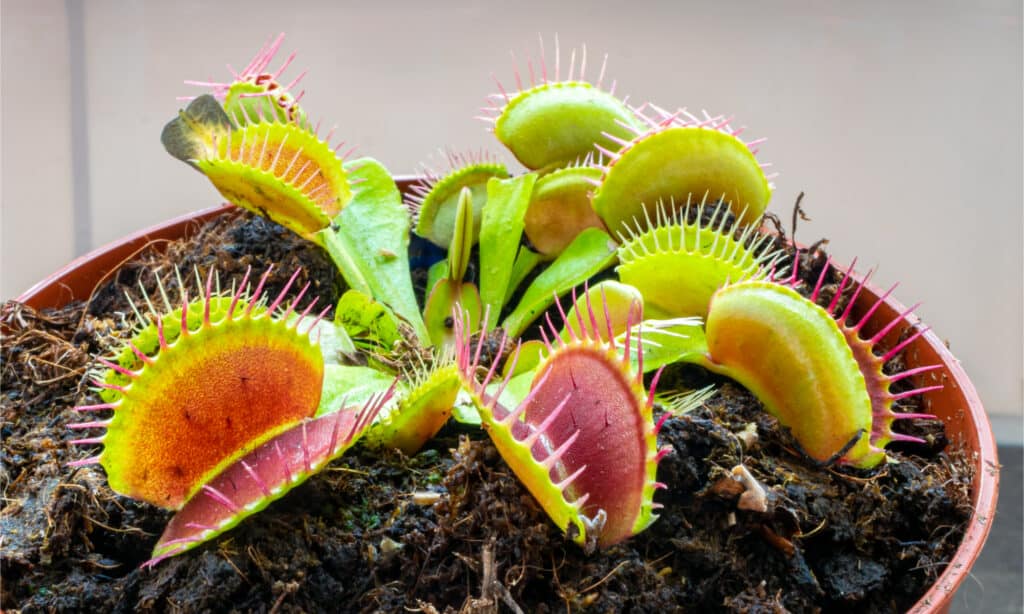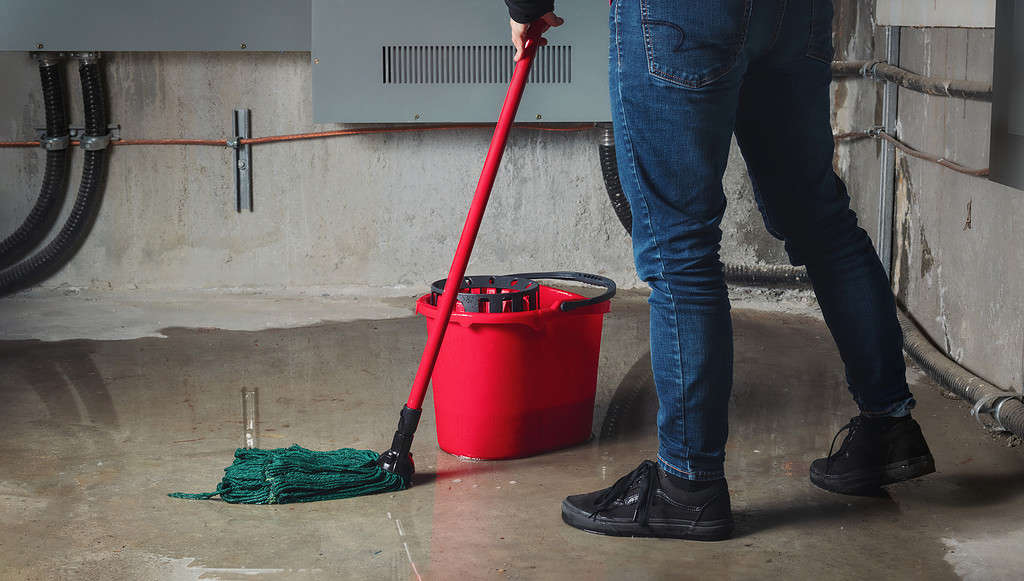Quick Answer:
- To make a fruit fly trap, fill a clear bowl/jar with 2 inches of white vinegar, cover it with plastic wrap, and poke a few holes in the wrap with a toothpick.
- Place it in the kitchen sink or near where you’ve noticed the fruit flies.
- You can also pour white vinegar down drains to instantly kill any fruit flies, eggs, or larvae.
As the weather begins to warm, pests like fruit flies become more prevalent and people search for natural ways to remove them from their homes. Fruit flies are some of the most difficult pests to deal with due to how quickly they can reproduce. Luckily, there are natural ways to deal with them like using white vinegar and other tricks, so we’ll take a look at some of them down below. Read on to learn more.
Where Do Fruit Flies Live?
Fruit flies are found all over the world with the exception of extreme cold regions in the north and south. They live in a variety of habitats including grasslands, forests, swamps, and coasts. They become particularly abundant in spring and summer.
When they enter homes, they are often live in the kitchen and in drains, garbage disposals, and trash cans. They also can be found in empty bottles and cans, as well as mops and cleaning rags.
How Long Do Fruit Flies Live?
How fast a fruit fly develops depends on its environment. In hot weather they live for up to 10 days. In optimum conditions, between 73 and 82 degrees Fahrenheit, they can live between 30 and 50 days.
Of course, when a trap is set for them and they’re caught, they have shorter lifespans.
Does White Vinegar Work for Fruit Flies?
Fruit flies are very attracted to anything that is fermenting or has products of fermentation in it. This is why you’ll typically find them around overripe or rotting fruit for example. They also love to be in moist, damp environments, which is why they tend to reproduce in kitchen sink drains, where they can hide as well as feed on food particles that may be in the sink.
Fruits, fruit drinks, beer, wine, ciders, and vinegar are all substances that have byproducts of fermentation within them. Because of this, fruit flies are naturally attracted to the smell that they emit. Any of those substances that have the fruit essence within them would work better than the white vinegar would, but when you’re in a pinch and you don’t have those things on hand, white vinegar can be an effective alternative. You can use white vinegar to make a trap that helps you get rid of fruit flies.

Fruit flies are attracted to substances that are fermented or in the process of fermenting.
©SUPAPORNKH/Shutterstock.com
How to Make a White Vinegar Fruit Fly Trap
Making a white vinegar fruit fly trap is very simple to do. All you will need is a clear bowl or jar, white vinegar, and plastic wrap. First, take your bowl and fill it with about two inches of white vinegar. Next, cover the bowl with a sheet of plastic wrap, making sure that it sticks on all sides and that none of the edges are lifting up. Once you’ve secured the plastic wrap, poke a few tiny holes in the top of it with a toothpick or similar-sized object. If you’re using a jar, you can make a paper funnel if that will work easier for the type of opening that your jar has.
Now that you have the white vinegar fruit fly trap made, place it in or near your kitchen sink, or wherever you have noticed the fruit flies. Over the next few days, you should notice that the trap you’ve made has caught a significant amount of fruit flies. If you’ve used plastic wrap over the top, it will be much easier for the fruit flies to become trapped in the white vinegar and drown.
If you don’t have any plastic wrap, don’t worry. It’s not a necessity in order for the trap to work, it just makes trapping the flies a lot easier and greatly speeds up the process. Either way with or without the plastic wrap, the white vinegar will still trap the fruit flies over time.
You can use this same bowl for up to a week, but if you notice that the bowl is catching a lot of fruit flies, you may want to refresh the mixture by dumping the old vinegar out, cleaning the bowl, and then refilling it again with another two inches of white vinegar. You can repeat this process until all of the fruit flies are gone and you’re no longer noticing any in the air.
Keep in mind that even though you’ve caught the adult fruit flies that were in the air, you will still need to make sure that there are no eggs left behind in your kitchen drains or anywhere else that could hatch later and cause more issues. Be sure to thoroughly clean all areas in your kitchen and home and remove any fruit that may be going bad. Taking the trash out more frequently also helps, as fruit flies can reproduce and lay eggs in the garbage can as well.
In order to keep your drains clean, you can boil some water and pour it down each drain in your home. This includes the bathroom and your shower drains as well. You can even go as far as pouring some down your toilet if you want to be extra careful as fruit flies can breed in toilet bowls as well. You can also take some of the white vinegar and pour it down the drains too as the white vinegar will instantly kill any fruit flies, eggs, or larvae on contact as it goes down the drain.
Other Methods to Get Rid of Fruit Flies
If you don’t have any white vinegar and are looking for an alternative to get rid of fruit flies, or you simply want to supplement the white vinegar trick with another approach, there are a few other methods you can try:
Rotten Fruit Trap
If you’re dealing with your fruit fly infestation because of rotting fruit, you can actually use it to your advantage. Instead of immediately throwing the fruit away, which would be our first instinct, use the fruit as a sort of “bait” to lure the fruit flies in. You can place the fruit in a jar or bowl, and just like you would with the white vinegar trap, cover the top of the bowl with plastic wrap and poke holes in the top.
This time the plastic wrap covering is very important. This is because since there’s no liquid or anything that the fruit flies would drown in once inside the bowl, they actually need to be securely trapped inside. If your plastic wrap isn’t secure, the fruit flies will get to the fruit you’ve placed inside and then be able to find their way out easily, defeating the purpose of the fruit trap and making your problem much worse. Place your trap near where you’ve seen the fruit flies primarily and by the next day, you should notice a significant amount of them have been caught.

A homemade fruit fly trap uses rotting fruit to attract and capture fruit flies.
©nkula/Shutterstock.com
Yeast Trap
Another alternative that’s worth trying is a yeast trap. In a clear bowl add two inches of warm water and a teaspoon of yeast. Add a small amount of sugar to the bowl in order to activate the yeast and then cover the bowl with plastic wrap (or a paper funnel if you’ve used a jar or other narrow container). Next, make sure the plastic wrap is on securely as we mentioned, and let the solution sit for one week.
If you’re having trouble keeping the plastic wrap on tightly, try securing it with a rubber band, which should help keep it in place. The fruit flies should be attracted to the yeast smell, as it is often present in fermentation processes. Check the bowl regularly to be sure that it is catching the fruit flies and empty it regularly to keep the bowl clean.
Milk Trap
If you really want to get creative, you can make a fruit fly trap out of milk, raw pepper, and sugar. First, bring to a simmer a mixture of one glass of milk, half a cup of raw pepper, and a cup of sugar together on the stove. Once the mixture begins to simmer, bring the temperature down and let it cool. Pour this mixture into a bowl and set it in the area where you’ve seen the most fruit flies. After some time you should notice that the fruit flies are lured into the bowl by the smell of the mixture and then suffocated by the clogging particles of the pepper. Repeat this process until you no longer notice any fruit flies remaining.
Carnivorous Plants
If you can get your hands on a carnivorous plant, you might be able to keep fruit flies and other small flying insects at bay more easily. Carnivorous plants consume insects like fruit flies and can help keep your home from becoming infested. Investing in plants like the carnivorous sundew might be a good idea. These plants lure insects in by their smell and then trap them on their sticky leaves where they are slowly digested over time. Keep in mind that since fruit flies reproduce very fast, having a carnivorous plant could help but won’t completely eliminate an extreme infestation. They would be best used alongside other natural remedies that we’ve listed here in order to keep the fruit fly issue under control.

Carnivorous plants like this Venus flytrap can help you control fruit flies.
©Menno van der Haven/Shutterstock.com
Things to Keep In Mind
While the remedies that we’ve gone over here will help to greatly reduce or completely eliminate a fruit fly infestation, it’s important to remember that the best way to reduce the issue is to keep your home clean and free of anything that fruit flies will use to feed on. This means that if you have any fruit that is overly ripe you will want to remove it.
Leaving fruit out when it’s overly ripe will just bring in more fruit flies or give the ones that you’re already dealing with something more to sustain themselves with. Wash all fruits you bring home in an apple cider vinegar bath to rid your fruit of any potential fruit fly eggs that may have been on it from the grocery store, as this is how many of them get on your fruit in the first place.
You can also make sure that you keep your drains cleaned regularly by pouring some vinegar and boiling water down them. This will kill any fruit flies, eggs, or larvae on contact as soon as it is poured down the drain. This is an important step since the traps will only work by killing off the adult fruit flies. You want to make sure that the problem doesn’t persist after you’ve caught all the adult fruit flies.
Why Do I Have So Many Fruit Flies in My House But No Fruit?

You may not realize that fruit flies can even be drawn to wet mops or puddles of water.
©Petra Richli/iStock via Getty Images
If you don’t consume much, if any, fruit to speak of, you may be wondering why those pesky little fruit flies are hovering around. Though they especially love fermenting fruit, these nuisances are drawn to any type of decaying matter or places where moisture sits like in mops, sponges, sink drains, garbage cans, compost, or puddles of standing water. They prefer to lay their eggs in these places.
Sometimes, fruit flies are brought into your home, having hitched a ride on items you bought at a grocery store or farmers market. Fruit flies also have an acute sense of smell to locate any source of rotting fruit or other food. Finally, they are so tiny that they can squeeze through cracks in walls or doors of your home, where they will set up shop if food they like is present.
Fruit Fly vs. Drain Fly
While the fruit fly is one common household pest, another is the drain fly. Both are similar in that they can be found in kitchens and bathrooms and be removed from homes by catching them in traps that contain vinegar.
One key difference between these two flies is their diet. As we know, fruit flies feed on sugary liquids found in fruits, vegetables, plants, or human foods. Whereas, true to their name, drain flies eat the organic slime that coats dirty drains as well as flower pollen and organic material in standing water.
Another way they differ is in size and appearance. The fruit fly is slightly bigger than the drain fly and usually measures a little over 1/8th of an inch. Uncommon in insects, the fruit fly has bright red eyes. The drain fly has a layer of small hairs that look like fur on their wings and some refer to the species as “moth flies” due to this fuzzy feature.
While they can be a nuisance, drain flies don’t carry any diseases that could harm humans. However, fruit flies are sponges for bacteria because they feed on contaminated substances. Find out more about the differences between the fruit fly and drain fly here.
The photo featured at the top of this post is © Tomatito/Shutterstock.com
Thank you for reading! Have some feedback for us? Contact the AZ Animals editorial team.






